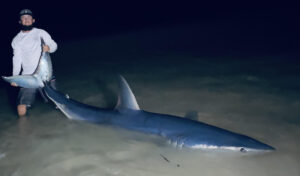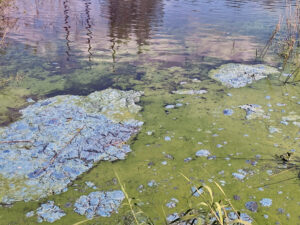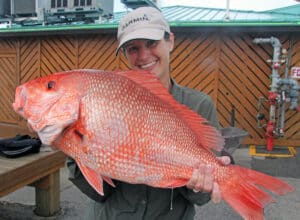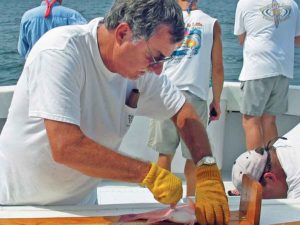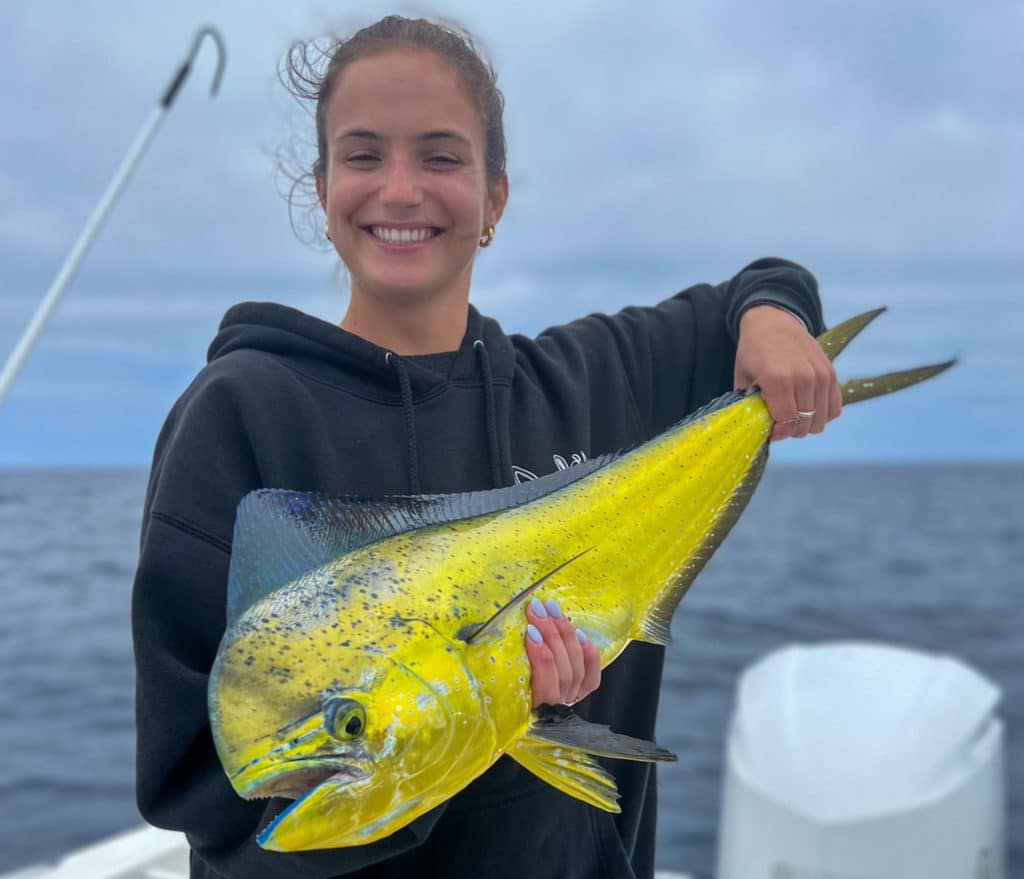
Hot Spot: San Diego, California
Species: Bluefin, yellowfin tuna, mahi, yellowtail
“All the buzz is about bluefin tuna,” reports Jordan Jennings, an angler and outdoor writer out of San Diego, California. Jennings says anglers are catching bluefin up to 60 pounds just nine miles off the beach. Farther north, big bluefin tuna are taking kite baits and high-speed trolling plugs. With all the tuna action, Jennings encourages anglers to start the day catching mahi on live bait. “We are seeing a huge volume of mahi-mahi,” he says.
For Jennings, a typical trip starts with a stop at the bait barge for a scoop of sardines. Then, he heads west to southwest looking for floating kelp patties holding dolphin and yellowtail.
He uses gyro-stabilized binoculars to scan the water for floating kelp patties. He says the water temperature has been in the low to mid ‘70s with beautiful clean blue water. Using online Satfish satellite charts, Jennings looks for temperature breaks and color changes. “We’ve been spoiled with gorgeous weather and less wind than the last couple summers.” Early in the morning, the winds are four to eight knots, then he expects to pick up out of the west or northwest at 10 to 15.
When he finds a floating pile of kelp, he rigs a live sardine on a 1/0 to No. 1 J-hook and 12 feet of 15 to 30 pound Seaguar Gold fluorocarbon leader. Jennings instructs, “Hook the sardine through the nose to make it swim on the surface, butt hook the bait to make it swim down below the kelp.” He says the water has been so clear, nose-hooked baits have been the best.
When he sees a yellowtail swimming across the surface, he turns to his casting rod and a surface iron with four feet of 50 to 60 pound Seaguar Blue fluorocarbon.
Once he has his fill of dolphin and yellowtail, he works his way inshore. “The best tuna bite has been in the afternoon on slack tide,” he says. As Jennings reaches inshore locations like Nine Mile Bank, he starts to look for schools of tuna feeding on bait pods. He also searches for working birds and picking terns. If the tuna are feeding aggressively, he casts a large topwater popper or stick bait with 50 to 60 pound fluorocarbon leader. “Since the topwater bite is a reaction strike, I use a heavier leader.” If the tuna are finicky, he goes for a live sardine on a 1/0 to 2/0 circle hook and 20 to 30-pound Seaguar Gold fluorocarbon leader.
Jennings is most excited about the big bluefin tuna bite. The traditional big bluefin tactic is fishing a rigged flying fish from a kite or helium balloon. This year, Jennings says high speed trolling with a Nomad 200 to 240 Madmacs is just as effective and a lot easier. He pulls the lures at 10 to 15 knots using 130-pound standup rods. “Trolling is a lot easier than messing with kites and balloons,” he says.
Through the rest of the season, Jennings expects the offshore fishing to stay hot. “September is my favorite month,” he says. He hopes the water will stay warm through October. “I think we’ll see more tuna moving north before they turn west and head offshore to Tanner and Cortez Banks. “We have plenty of great offshore fishing out of Southern California,” he says.
Tackle Box:
Live bait:
- Rod: 7-foot Seeker Live Bait
- Reel: PENN Fathom 2 25 Narrow
- Line: 50-pound Yozuri Superbraid
Topwater Tuna:
- Rod: 8-foot Seeker spinning rod
- Reel: PENN Authority 6500
- Line: 65-pound Yozuri Superbraid
Surface Yellowtail:
- Rod: 9-foot, 3-inch Seeker Jig Stick
- PENN Fathom 25 Narrow (star drag)
- Line: 65-pound Yozuri Superbraid
High speed trolling:
- Rod: 7-foot Seeker OSP Rail Rod
- Reel: PENN 50 VISX
- Line: 130lbs Seaguar braid
- Leader: 100lbs Seaguar Blue label wind-on

